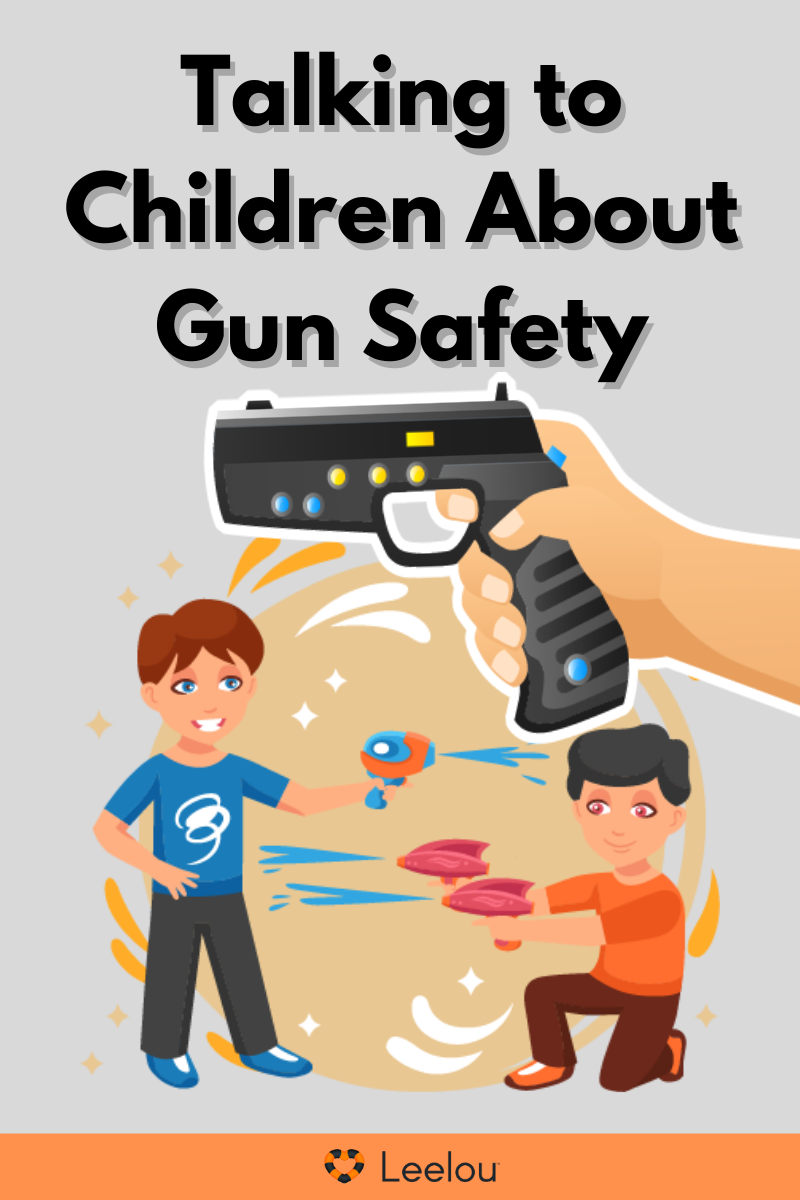Here are some ways you can have a conversation with your child about firearms and what they need to stay safe.

Always invite your children to come to you whenever they have questions or concerns about guns.
- Remind them never to touch any gun or bullets.
- Explain the difference between toy guns and real ones.
- Stress the fact that guns can kill and encourage them to make safe decisions.
- Lead by example and demonstrate safe gun practices that your children can observe.
- Encourage children to tell you if they ever feel unsafe at home or at school.
- Help choose programs, movies, and games that are non-violent. Talk to them about violence in television, movies, and videogames and prompt them to discuss their feelings.
- Be on the lookout for signs of depression, since suicide is one of the common causes of youth handgun death.
- Check with other parents to find out if they have a gun in their home before your children visit.
Rules for Safe Gun Storage
- Keep all guns and ammunition out of the reach of children, untrained adults, and those who would use them improperly.
- Always keep your guns locked in a gun safe that cannot be easily broken into or taken away. If one is not available, use a cable lock or trigger lock (one that goes behind the trigger is preferred) and store the guns out of the reach of those who should not have access to them.
- Keep the keys to gun safes and gun locks hidden and out of the reach of those who should not have access to them.
- Store your guns unloaded and with the safety on.
- Keep the guns dry, cleaned and oiled while in storage.
- Store guns and ammunition in a dry cool place and away from heat and fire.
The 12 Golden Rules for Safe Gun Handling
- Always treat the gun as if it is loaded.
- Always keep the gun pointed in a safe direction.
- Always keep your finger straight and off the trigger until you are ready to shoot.
- Always keep the gun unloaded until you are ready to use it.
- Never point the gun at anything you don't intend to shoot.
- Be sure of your target and what is beyond it.
- Learn the mechanical and handling characteristics of the gun you are using.
- Always use proper ammunition.
- Be sure the barrel is clear of obstructions before loading and shooting.
- If your gun fails to fire when the trigger is pulled, hold your shooting position for several seconds; then with the muzzle pointed in a safe direction, carefully unload the gun.
- Don't rely on the gun's safety to keep it from firing.
Be aware of your surroundings when handling guns so you don't trip or lose your balance and accidentally point and/or fire the gun at anyone or anything.
